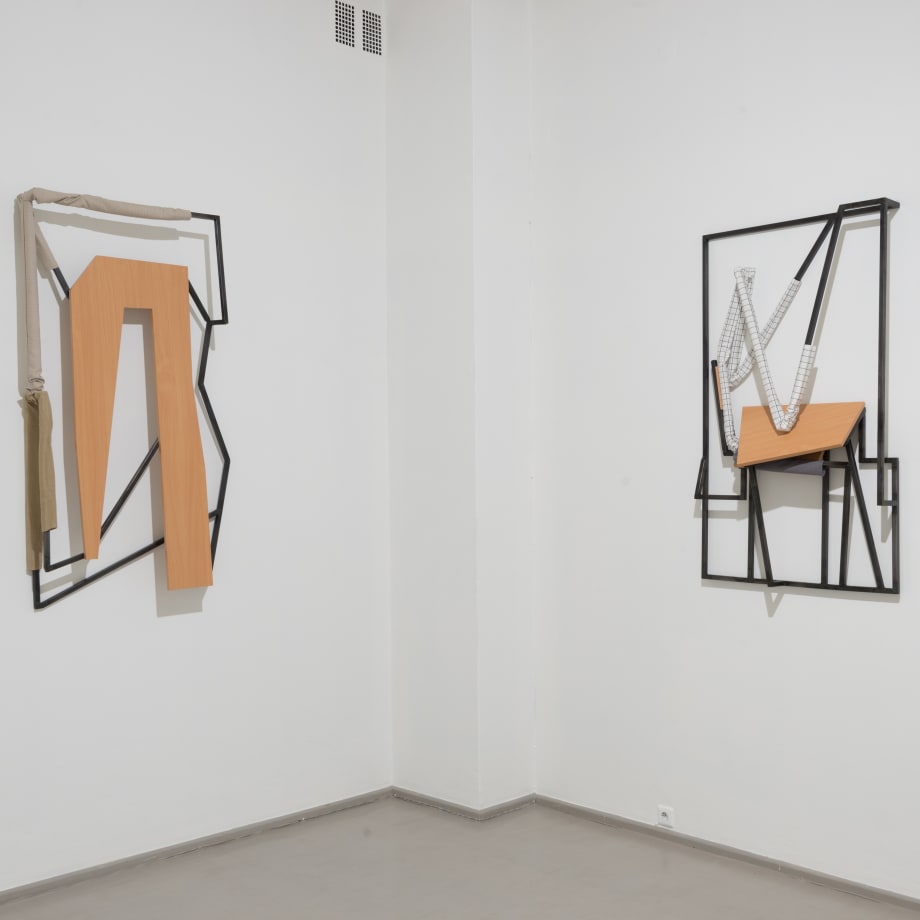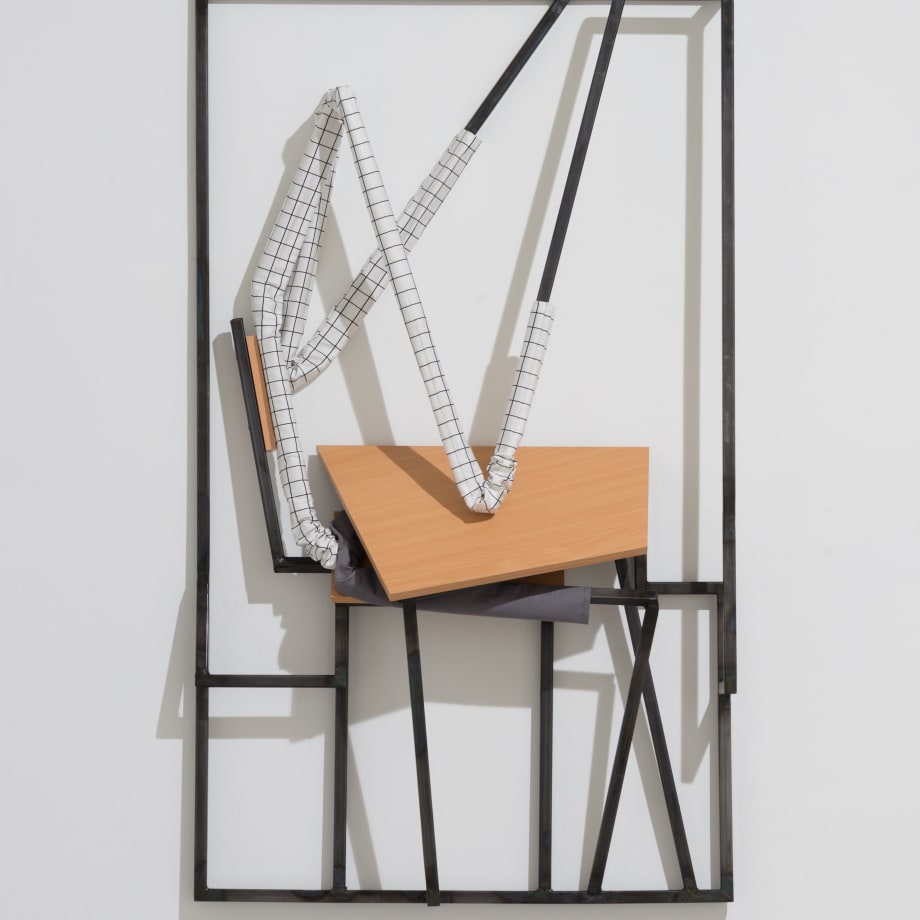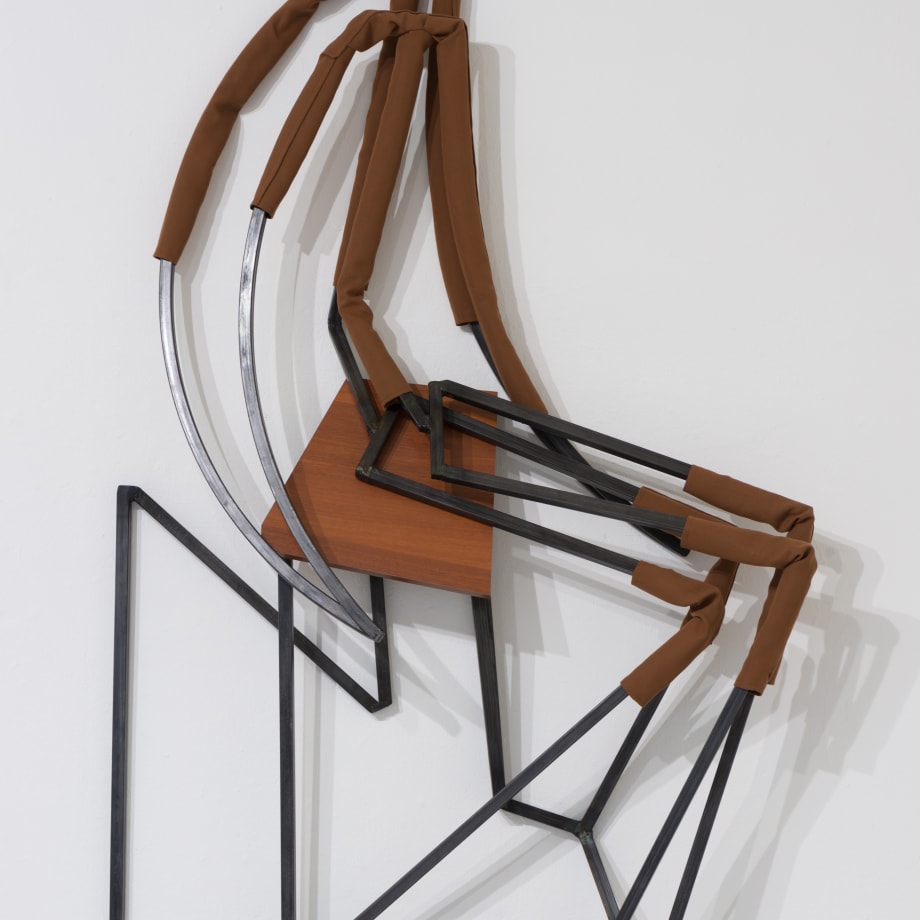Indriķis Ģelzis: Rest and Vest
Ģelzis’s wall sculptures seemingly flirt with the future visions and sculptural compositions of the early 20th century futurists and constructivists. However, since the future of the past is now the present, which is a time of great acceleration, the creative principles and semantic field of this artist seem even more relevant than they could have been a century ago. The terms mobility, mechanics and digitalism are to be found not only in the descriptions of technical parameters or futurists’ speculations on the future, they have transcended the boundaries of technology and are now normal everyday attributes. It is not a coincidence that these sculptures remind one of statistical graphics and are related to the dominant logic of algorithmic thinking, where digital images of mountains and abysses are more frequent and real than the real ones.
Indriķis Ģelzis (b. 1988) received his Master’s degree from the Visual Communications department of the Art Academy of Latvia and graduated from the HISK (Hoger Instituut voor Schone Kunsten) Higher Institute for Fine Arts, in Ghent, Belgium. Among other venues, the artist has had solo exhibitions at the National Art Museum of Latvia, the kim? Contemporary Art Centre (Latvia), the Cinnamon gallery (The Netherlands), Hole Of The Fox (Belgium). The artist regularly takes part in group exhibitions. His works have been exhibited at the Stedelijk Museum Amsterdam (The Netherlands), the Lundgren gallery (Spain), the Stable gallery (Belgium), the ERA VI VII VI space in New York, as well as other venues in Europe and the USA.
Maecenas
Živilė and Jonas Garbaravičius
Patron
Rolandas Valiūnas
Gallery supported by
Vilnius City Municipality, Art Fund, Vilma Dagilienė, Romas Kinka, Ararat, Lietuvos Rytas, Ekskomisarų biuras, Namai ir objektai, Farrow and Ball, Libra Vitalis
Vartai gallery is pleased to present an exhibition of work by the Latvian artist Indriķis Ģelzis. Rest and Vest will be his second solo exhibition at Vartai gallery, with this young and ambitious artist presenting his latest wall sculptures.
Ģelzis’s wall sculptures seemingly flirt with the future visions and sculptural compositions of the early 20th century futurists and constructivists. However, since the future of the past is now the present, which is a time of great acceleration, the creative principles and semantic field of this artist seem even more relevant than they could have been a century ago. The terms mobility, mechanics and digitalism are to be found not only in the descriptions of technical parameters or futurists’ speculations on the future, they have transcended the boundaries of technology and are now normal everyday attributes. It is not a coincidence that these sculptures remind one of statistical graphics and are related to the dominant logic of algorithmic thinking, where digital images of mountains and abysses are more frequent and real than the real ones.
Ģelzis’s artworks are basically stable in their structure, but their form is in a way in opposition to material stability and hints at dynamism and the moment of stopped gesture, movement or action. Perhaps it is the rhythm of diagonal and curved forms or the fact that it is hard to describe the metal lines of the sculptural compositions other than rising or falling, coming somewhere between mechanical and organic movement, free fall and precisely calculated trajectories of motion.
The artist’s simple, yet complex spatial compositions do not attempt to mimic any real-world figures or objects. Perhaps even the opposite is true in that his works are more prone to visual polysemy rather than reproduction of a particular image or theme by making it abstract or specific. In the very same way, the titles of the artworks do not narrow the range of their meanings, but are more likely to set an intellectual or emotional mood and frequently refer to a few more possibilities in how to read the work. Paradoxically, it is the emptiness that actually occupies the largest part of the artwork. And it is the artwork itself which functions as a negative image, dependent on itself as much as on the surface it is exhibited on.
Indriķis Ģelzis (b. 1988) received his Master’s degree from the Visual Communications department of the Art Academy of Latvia and graduated from the HISK (Hoger Instituut voor Schone Kunsten) Higher Institute for Fine Arts, in Ghent, Belgium. Among other venues, the artist has had solo exhibitions at the National Art Museum of Latvia, the kim? Contemporary Art Centre (Latvia), the Cinnamon gallery (The Netherlands), Hole Of The Fox (Belgium). The artist regularly takes part in group exhibitions. His works have been exhibited at the Stedelijk Museum Amsterdam (The Netherlands), the Lundgren gallery (Spain), the Stable gallery (Belgium), the ERA VI VII VI space in New York, as well as other venues in Europe and the USA.
















